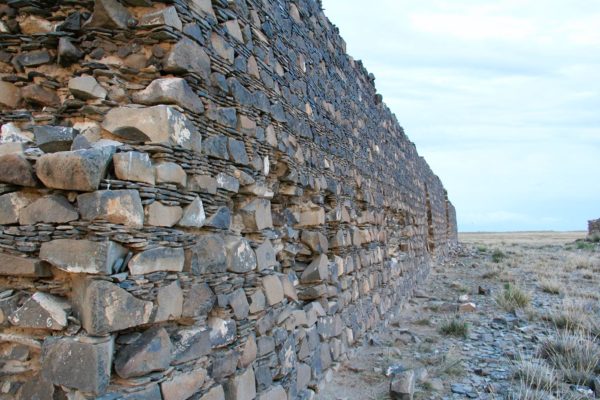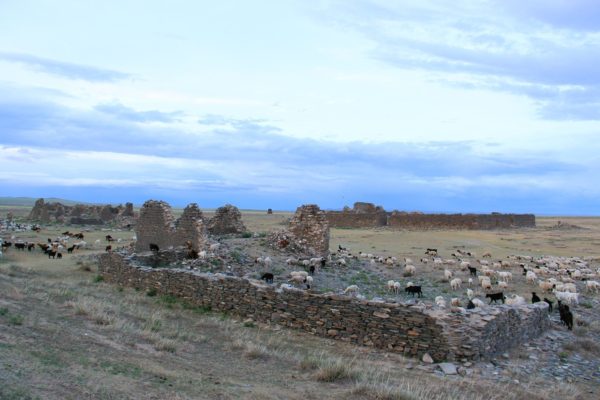The region of Dashinchilen Sum, Bulgan Province, boasts a historical site located 12 km from the town center, adjacent to the Khar Bukh River bridge. Known colloquially as Prince’s Ruins and Khadaasang Ruins, the site has yielded roof vases with Khitan inscriptions from the 9th-10th centuries, which have been traced to the ruins of Chin Tolgoi, signifying their association with the Khitan era.
The site’s wall spans an area of approximately 500 meters and includes a central street flanked by structures on either side, some of which feature specialized walls and moats. Of particular interest is the wall’s construction, which employs layers of volcanic rock and shale.
The surviving structures consist of a two-story palace and a stupa. In 1998, the Khar Bukh ruins were placed under state protection. A collection of Mongolian legal texts inscribed on corks in the 15th-16th centuries was discovered in the nearby village. These corks contained scriptures on various religious topics, compilations of laws, and the Mongolian alphabet.
In subsequent years, a joint Mongolian-Japanese project team uncovered a birch cork manuscript from the 15th-17th centuries, containing over 60 pages. The researchers hypothesized that these texts were the source of information on Buddhism’s spread in Mongolia, the establishment of monasteries, and the translation of Buddhist books into Mongolian. The inscriptions also shed light on the fact that Mongolians themselves produced cork books in the 15th and 17th centuries, underscoring the significance of the Khar Bukh ruins as a vital cultural and historical center.






